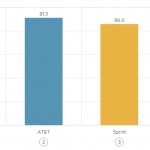from The Conversation
— this post authored by Larisa Yarovaya, Anglia Ruskin University and Brian Lucey, Trinity College Dublin
In the last year, the price of Bitcoin has increased from less than US$800 to more than US$19,000. This huge spike in value has many asking if it is a bubble or if the high price today is here to stay.

Please share this article – Go to very top of page, right hand side, for social media buttons.
Finance defines a bubble as a situation where the price of an asset diverges systematically from its fundamentals. Investment mogul Jack Bogle says there is nothing to support Bitcoin, and the head of JP MorganChase, Jamie Dimon has called it a fraud “worse than tulip bulbs”.
Like any asset, Bitcoin has some fundamental value, even if only a hope value, or a value arising from scarcity. So there are reasons to hold it. But our research does show that it is experiencing a bubble right now.
Together with Shaen Corbet at Dublin City University, we took as the fundamentals of Bitcoin elements of the technology that underpins it (and other cryptocurrencies). We looked at measures, which represent the key theoretical and computational components of how cyrptocurrencies are priced.
New Bitcoin is created by a process of mining units called blocks. Bitcoin is built on blockchain technology – a digital ledger of transactions – which enables the currency to be traded independently from any central banking system, without risk of fake or duplicate Bitcoins being used. Instead of having a bank verify pending transactions (a “block”), miners check them and, if approved, the block is cryptographically added to the ever-expanding ledger.
So the first measure we examined relates to mining difficulty. It calculates how difficult it is to find a new block relative to the past. As per the Bitcoin Protocol, the number of Bitcoin is capped at 21m (there are currently 16.7m in circulation). This means that as more people mine for Bitcoin and more blocks are created, each block is, all things being equal, worth less than the previous block.














Leave A Comment